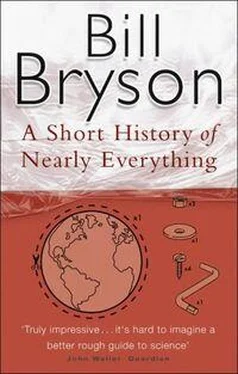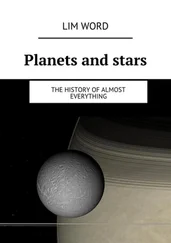“a bacterial component in all kinds of other disorders . . .” Science , “Do Chronic Diseases Have an Infectious Root?” September 14, 2001, pp. 1974-76.
“a piece of nucleic acid surrounded by bad news . . .” Quoted in Oldstone, Viruses, Plagues and History , p. 8.
“About five thousand types of virus are known . . .” Biddle, pp. 153-54.
“Smallpox in the twentieth century alone . . . ” Oldstone, p. 1.
“In ten years the disease killed some five million people . . . ” Kolata, Flu , p. 292.
“World War I killed twenty-one million people in four years . . . ” American Heritage , “The Great Swine Flu Epidemic of 1918,” June 1976, p. 82.
“In an attempt to devise a vaccine . . .” American Heritage , “The Great Swine Flu Epidemic of 1918,” June 1976, p. 82.
“Researchers at the Manchester Royal Infirmary . . . ” National Geographic , “The Disease Detectives,” January 1991, p. 132.
“In 1969, a doctor at a Yale University lab . . .” Oldstone, p. 126.
“In 1990, a Nigerian living in Chicago . . .” Oldstone, p. 128.
“The fate of nearly all living organisms . . .” Schopf, p. 72.
“Only about 15 percent of rocks can preserve fossils . . .” Lewis, The Dating Game , p. 24.
“less than one species in ten thousand . . .” Trefil, 101 Things You Don’t Know About Science and No One Else Does Either , p. 280.
“there are 250,000 species of creature in the fossil record . . .” Leakey and Lewin, The Sixth Extinction , p. 45.
“About 95 percent of all the fossils we possess . . .” Leakey and Lewin, The Sixth Extinction , p. 45.
“It seems like a big number . . .” Richard Fortey, interview by author, Natural History Museum, London, February 19, 2001.
“one-half of 1 percent as long.” Fortey, Trilobite ! p. 24.
“a whole Profallotaspis or Elenellus as big as a crab . . .” Fortey, Trilobite! p. 121.
“built up a collection of sufficient distinction . . .” “From Farmer-Laborer to Famous Leader: Charles D. Walcott (1850-1927),” GSA Today , January 1996.
“In 1879 he took a job as a field researcher . . .” Gould, Wonderful Life , pp. 242-43.
“His books fill a library shelf . . .” Fortey, Trilobite! p. 53.
“our sole vista upon the inception of modern life . . .” Gould, Wonderful Life , p. 56.
“Gould, ever scrupulous, discovered . . .” Gould, Wonderful Life , p. 71.
“140 species in all, by one count.” Leakey and Lewin, The Sixth Extinction , p. 27.
“a range of disparity . . . never again equaled . . .” Gould, Wonderful Life , p. 208.
“Under such an interpretation,’ Gould sighed . . .” Gould, Eight Little Piggies , p. 225.
“Then in 1973 a graduate student from Cambridge . . .” National Geographic , “Explosion of Life,” October 1993, p. 126.
“There was so much unrecognized novelty . . .” Fortey, Trilobite! p. 123.
“they all use architecture first created . . . ” U.S. News and World Report , “How Do Genes Switch On?” August 18/25, 1997, p. 74.
“at least fifteen and perhaps as many as twenty . . .” Gould, Wonderful Life , p. 25.
“Wind back the tape of life . . .” Gould, Wonderful Life , p. 14.
“In 1946 Sprigg was a young assistant government geologist . . .” Corfield, Architects of Eternity , p. 287.
“it failed to find favor with the association’s head . . .” Corfield, p. 287.
“Nine years later, in 1957 . . .” Fortey, Life , p. 85.
“There is nothing closely similar alive today . . .” Fortey, Life , p. 88.
“They are difficult to interpret . . .” Fortey, Trilobite ! p. 125.
“If only Stephen Gould could think as clearly as he writes!” Dawkins review, Sunday Telegraph , February 25, 1990.
“One, writing in the New York Times Book Review . . .” New York Times Book Review , “Survival of the Luckiest,” October 22, 1989.
“Dawkins attacked Gould’s assertions . . .” Review of Full House in Evolution , June 1997.
“startled many in the paleontological community . . . ” New York Times Book Review , “Rock of Ages,” May 10, 1998, p. 15.
“I have never encountered such spleen in a book by a professional . . .” Fortey, Trilobite ! p. 138.
“the idea of comparing a shrew and an elephant.” Fortey, Trilobite ! p. 132.
“None was as strange as a present day barnacle . . .” Fortey, Life , p. 111.
“no less interesting, or odd, just more explicable.” Fortey, “Shock Lobsters,” London Review of Books , October 1, 1998.
“to have one well-formed creature like a trilobite . . .” Fortey, Trilobite ! p. 137.
CHAPTER 22 GOOD-BYE TO ALL THAT
“In areas of Antarctica where virtually nothing else will grow . . .” Attenborough, The Living Planet , p. 48.
“Spontaneously, inorganic stone becomes living plant!” Marshall, Mosses and Lichens , p. 22.
“more than twenty thousand species of lichens.” Attenborough, The Private Life of Plants , p. 214.
“Those the size of dinner plates . . . ” Attenborough, The Living Planet , p. 42.
“compressed into a normal earthly day . . .” Adapted from Schopf, p. 13.
“stretch your arms to their fullest extent . . .” McPhee, Basin and Range, p. 126.
“Oxygen levels . . . were as high as 35 percent . . .” Officer and Page, p. 123.
“the isotopes accumulate at different rates . . .” Officer and Page, p. 118.
“put them in wind tunnels to see how they do it . . . ” Conniff, Spineless Wonders , p. 84.
“dragonflies grew as big as ravens.” Fortey, Life , p. 201.
“Luckily the team found just such a creature . . .” BBC Horizon , “The Missing Link,” first aired February 1, 2001.
“The names simply refer to the number and location of holes . . . ” Tudge, The Variety of Life , p. 411.
“as high as 4,000 billion.” Tudge, The Variety of Life , p. 9.
“To a first approximation . . . all species are extinct.” Quoted by Gould, Eight Little Piggies , p. 46.
“the average lifespan of a species . . .” Leakey and Lewin, The Sixth Extinction , p. 38.
“The alternative to extinction is stagnation . . .” Ian Tattersall, interviewed at American Museum of Natural History, New York, May 6, 2002.
“invariably associated with dramatic leaps afterward . . .” Stanley, p. 95; and Stevens, p. 12.
“In the Permian, at least 95 percent of animals . . . ” Harper’s , “Planet of Weeds,” October 1998, p. 58.
“Even about a third of insect species . . . ” Stevens, p. 12.
Читать дальше












